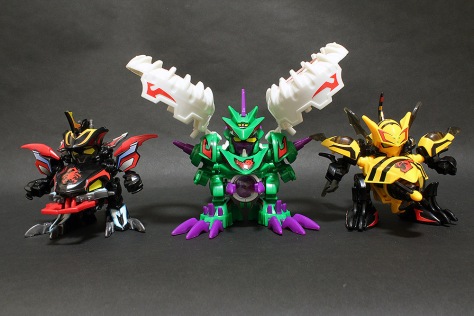The drivetrain is probably the most important part of a machine and there are uncountable ways to try and get the most speed out of it. The primary source of speed is of course the motor, and most users perform break ins to try and get peak performance out of it. With countless methods and no one true way, it becomes natural that break in methods are sort of a trade secret.
I am not an expert on choosing the right motor, so I will not go into too much detail. Besides, there is a lot of existing information on the internet. Nowadays, it is much easier to break in motors thanks to the appearance of smartphone apps that can measure the speed of a motor (examples: Giri, Try to measure RPM?, Mini4WD Lap Timer etc.), so you can gauge whether your methods are making a difference. According to Japanese bloggers, the type of brush can affect the effectiveness of a particular break in method, and in general the old generation of Tuned class motors and the Light Dash motor still retain metal brushes, while the faster motors use carbon brushes. Metal brushes conduct electricity better and gain more benefit from breaking in but have a shorter lifetime compared to carbon brushes.
Variables like break in voltage and duration also affect the outcome. Currently, I use 4 AA non-rechargeable batteries for 6V based on the results recorded on this Japanese page and break in as follows:
- Forward for 1 minute
- At least 3 minutes’ rest (motors that run hotter will take longer to cool down)
- Reverse for 1 minute
- At least 3 minutes’ rest
- 5 sets for a total of 10 reps, taking at least 37 minutes total
Depending on luck of the draw as well, breaking in may provide a larger effect than usual. The most demanding users buy in bulk and pick the fastest motors, just like GPU binning.
Here I have briefly listed the results of this break in method on several motors, powered using a pair of rechargeable batteries.
|
Atomic Tuned Pro |
Hyper Dash Pro |
Hyper Dash 3 |
Tamiya Handy Router motor |
| Before break in |
15k |
20k |
20k |
26k |
| After break in |
16k |
19k |
19k |
25k |
| After using electrical contact cleaner |
18k |
21k |
21k |
28k |
The motors listed in the above table use carbon brushes as far as I can tell. The router motor appears to be a hidden gem, though it would probably be banned from official races. I also made a second attempt, using motors equipped with metal brushes.
|
Torque Tuned 2 |
Torque Tuned 2 Pro |
Light Dash |
Light Dash Pro |
| Before break in |
14.3k |
13.8k |
14.9k |
15.1k |
| After break in |
17.0k |
16.6k |
17.1k |
17.1k |
| After using electrical contact cleaner |
16.8k |
17.2k |
17.7k |
18.0k |
Since the measurement fluctuates I omitted some precision with the carbon brush-equipped motors as they had vastly different specs. With the metal brush-equipped motors, they were similar so I put in a bit more precision. As far as carbon brush-equipped motors are concerned, this method does not seem to provide any significant benefit. On the other hand, the metal brush-equipped motors see a noticeable boost.
I am also playing devil’s advocate and including the bottom row of data. Regulations forbid opening the motor to modify its internals, or using any sort of additive that leaks onto the tracks. This means that things like parts cleaner sprays straddle the line. If you wipe things down properly, I believe leaks can be prevented. While it doesn’t seem to have an effect on the metal brushes, the carbon brushes get a boost.
You can see that my Atomic Tuned Pro is on par with my Light Dash Pro in terms of performance. My Torque Tuned motors seem to be on the top end of their spec, while my Light Dash motors are on the bottom end, thus confirming the rumour that it is possible for an Atomic Tuned Pro to beat a Light Dash Pro.
























